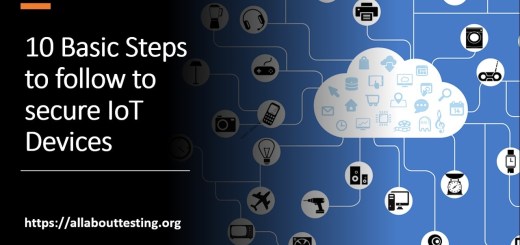Top Tips to Secure Servers and IT Infrastructure [Updated 2024]

The security of servers is one of the utmost critical tasks for server administrators and network analysts. A lot of tasks need to be performed to secure IT infrastructure. I am listing out Top Tips to Secure Servers and IT infrastructures from cyber attacks.
- 1. Use a secure authentication mechanism
- 2. File system, Files, and directories
- 3. Operating System and Software
- 4. Training
- 5. Use updated Antivirus
- 6. Use Firewall, IDS, and IPS
- 7. Use static and dynamic analysis to secure code
- 8. Define policies for users & groups
- 9. Services & packages
- 10. Regular Audits & Vulnerability scans
- 11. Backup
1. Use a secure authentication mechanism
It is a process of verifying the identity of the user or process. To secure infrastructure, always use strong passwords, and public key authentication, Implement two-factor authentication, and Store your credentials and keys securely for authentication.
2. File system, Files, and directories
Read, modify, or execute commands and scripts for files and directories to the right users and groups. Implement ISO 27001, PCI-DSS standards, which helps the system to secure the file system's integrity.
3. Operating System and Software
Always use genuine software and install vendor's security patches at regular time intervals.
4. Training
Ensure regular training to enhance knowledge of IT security-related awareness to IT personnel.
5. Use updated Antivirus
Antivirus is mandatory as it detects and cleans 90% of malware that sits in the system. Also, ensure antivirus logs are generated regularly and monitored by the security team.
6. Use Firewall, IDS, and IPS
Use network devices to secure the perimeter of IT infrastructure. A review also needs to be done regularly for configured policies at regular intervals by network security experts. Follow Best practices recommended by the network device manufacturers. Refer 30 Points Firewall Security Audit Checklist to audit firewall devices.
7. Use static and dynamic analysis to secure code
Application security also plays a crucial role in securing IT systems. Follow the checklist provided by the open web application security project (OWASP) into the Software Development Life Cycle (SDLC) to secure web applications. Use static code analysis tools to find security flaws. Refer 50 Point Checklist for Secure Code Review.
8. Define policies for users & groups
There should be policies in place for individuals and groups. Provide minimum rights to both according to need, delete each of them if they are no longer in use, and enforce role separation, i.e., limit individuals' privileges to prevent fraud.
9. Services & packages
Uninstall services and software from servers that are not necessary. Implement security best practices provided by service package providers like Apache, SQL server, etc.
10. Regular Audits & Vulnerability scans
Regular audits play a key role in safe servers from any cyber attack. Vulnerability Assessment(VA) and Penetration Testing(PT) should be done at the defined regular time. Refer 25 Points Virtualization Security Checklist to audit virtualization infrastructure.
11. Backup
Regular backup is a solution to any Ransomware attack (like Wannacry, Petya, etc.) and other corrupt data attacks. If your servers are hacked, it is possible to restore data from the earliest clean backup. This process saves your data in case of any mishappening. Refer
Subscribe us to receive more such articles updates in your email.
If you have any questions, feel free to ask in the comments section below. Nothing gives me greater joy than helping my readers!
Disclaimer: This tutorial is for educational purpose only. Individual is solely responsible for any illegal act.








